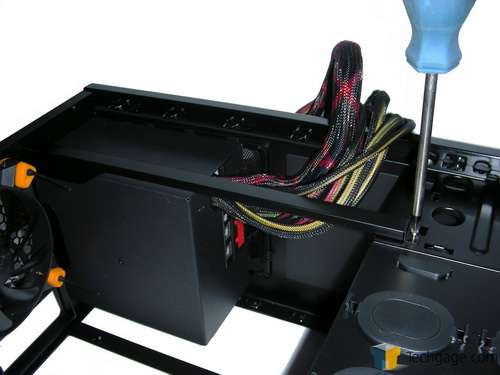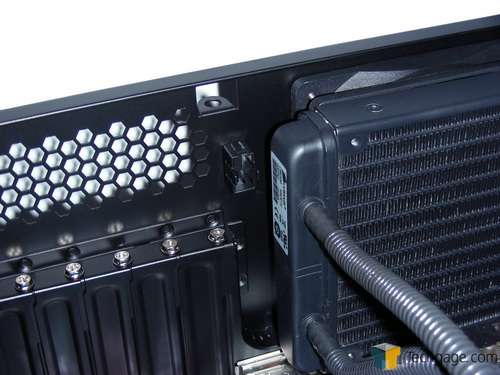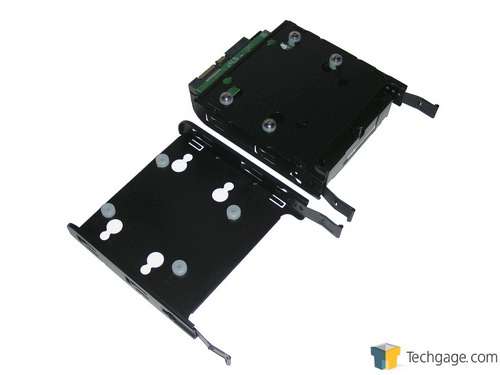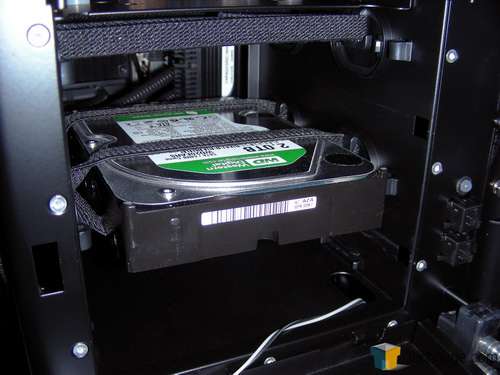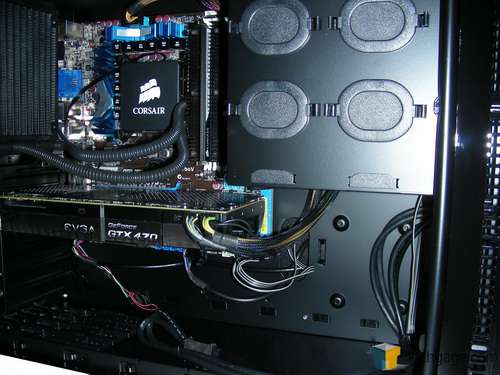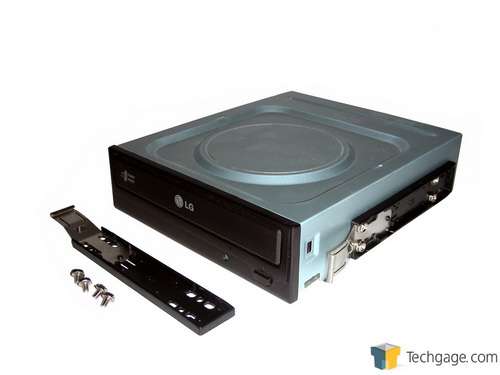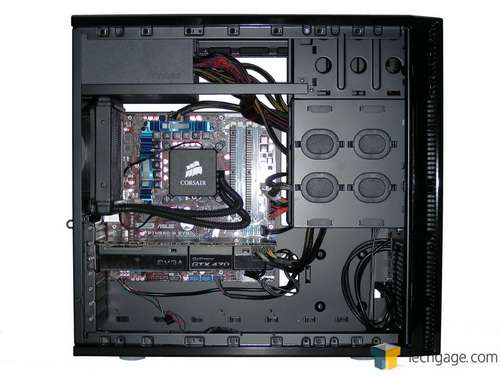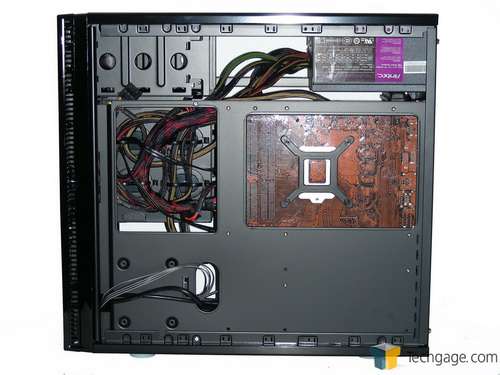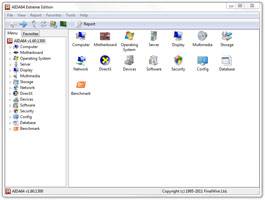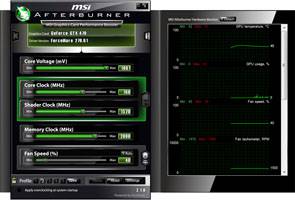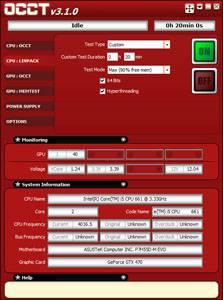- Qualcomm Launches Snapdragon 4 Gen 2 Mobile Platform
- AMD Launches Ryzen PRO 7000 Series Mobile & Desktop Platform
- Intel Launches Sleek Single-Slot Arc Pro A60 Workstation Graphics Card
- NVIDIA Announces Latest Ada Lovelace Additions: GeForce RTX 4060 Ti & RTX 4060
- Maxon Redshift With AMD Radeon GPU Rendering Support Now Available
Antec SOLO II Mid-Tower Chassis Review
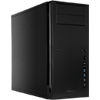
Antec is known for making a variety of quality cases to suit different needs, with its Sonata family aiming to deliver clean styling, functionality and silence all in one. The SOLO II becomes the latest entry to that family, and in some ways, it’s very different than other silent cases on the market. It’s time to find out if that’s a good thing.
Page 3 – Installation & Testing
I can’t remember the last time I built a system where the power supply was mounted at the top, but I have to admit that I still like routing cables in this configuration. The cross brace was removed first once two screws from the back panel and side of the 5.25″ drive bays were out of the way. The power supply secured in place perfectly with the fan facing up to draw air in through the vent, but it can also be oriented with the fan facing down.
There were no problems to report with the motherboard and cooler either, although space was tight. The online manual goes into detail about how to install one of Antec’s all-in-one liquid coolers, so I knew that our Corsair H60 would fit easily. Removing the stock exhaust fan also required the controller to be removed from the back panel by pushing out on two small clips on either side.
Installing hard drives was also easy. The silicon mounts need to be moved to the alternate holes in the drive tray to accommodate 2.5″ drives but our 3.5″ test drive installed securely through the bottom with the help of a screw driver.
The suspension system was also tested with a drive tray removed. It made me a bit uneasy to have a drive floating in a case but there were no problems and the drive stayed in place surprisingly well when the system was rocked side to side and front to back – although I wouldn’t subject to much more.
Sadly, our 2.5″ solid state drive used for mock-up purposes was not available in order to test the drive trays and area on the motherboard tray, but both should go off without a hitch using the included hardware.
Even though the SOLO II is on the small side, users with large GPUs are in luck thanks to the elevated drive cages providing a whopping 15″ of room from front to back, which is more than enough for even a NVIDA GTX 590 or AMD 6990. Some of this space will be lost if an intake fan is installed in the bottom front area but not to the point that it should interfere with either card.
Using the drive rails that are secured to the floor of the case our (dusty) mock up optical drive slid into the 5.25″ bay without a hitch but required each rail to be secured with four of the included screws.
Finally, here’s a look at the finished product:
On the other side I made heavy use of the cable management hooks. One of them did pop out when too much strain was put on it, but choosing a different hook that allowed for a little extra slack remedied this.
There were no problems routing cables from the power supply or the front panel although running the audio cable through the hole in the motherboard tray cut it close as it just reached the header at the bottom rear of our test motherboard.
Testing
All of our testing is performed in a near steady 20°C ambient environment with readings taken before and after with a standard room thermometer. AIDA64 Extreme Engineer is used for monitoring and recording all system temperatures throughout the testing process.
Windows is allowed to sit idle for 10 minutes after startup to ensure all services are loaded before recording the idle CPU and GPU temperatures. CPU load temperatures are generated by performing a 20 minute run of OCCT LINPACK using 90% of the available memory, while GPU load temperatures are generated by OCCT’s built in test, also for 20 minutes.
Stock CPU settings were obtained by setting the AI Tweaker option with the BIOS to Auto and the maximum stable overclock frequency of 4.0GHz was obtained after extensive testing to ensure stability. The final clocks for the GPU are 760MHz on the core and 1000MHz QDR (4000MHz relative) for the memory with the voltage increased to 1.087V using MSI’s Afterburner overclocking utility. As with the CPU overclock, testing was done prior to ensure full stability.
The components used for testing are:
|
Component
|
Techgage Test System
|
| Processor |
Intel Core i5-661 – Dual-Core (3.33GHz)
|
| Motherboard |
ASUS P7H55D-M EVO mATX – H55-based
|
| Memory |
Corsair Dominator 2x2GB DDR3-1600 7-8-7-20-2T
|
| Graphics |
EVGA GeForce GTX 470
|
| Audio |
On-Board Audio
|
| Storage |
Western Digital 2TB Green
|
| Power Supply |
Antec TP-750 Blue
|
| Chassis |
Antec SOLO II
Cooler Master HAF 932 Advanced Cooler Master Silencio 550 Corsair Carbide 400R Corsair Obsidian 650D Corsair SE White 600T NZXT H2 NZXT Tempest 410 Elite Silverstone Raven RV03 Thermaltake Chaser MK-1 Thermaltake Level 10 GT |
| CPU Cooling |
Corsair H60 (Exhaust Configuration)
|
| Et cetera |
Windows 7 Ultimate 64-bit
|
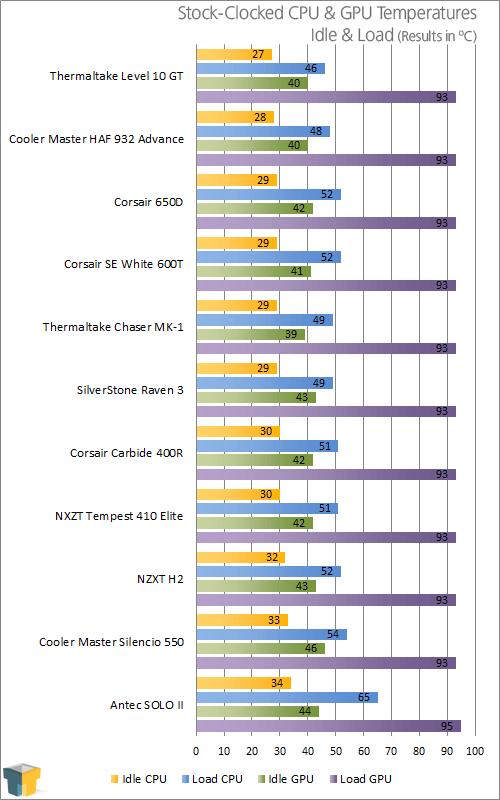
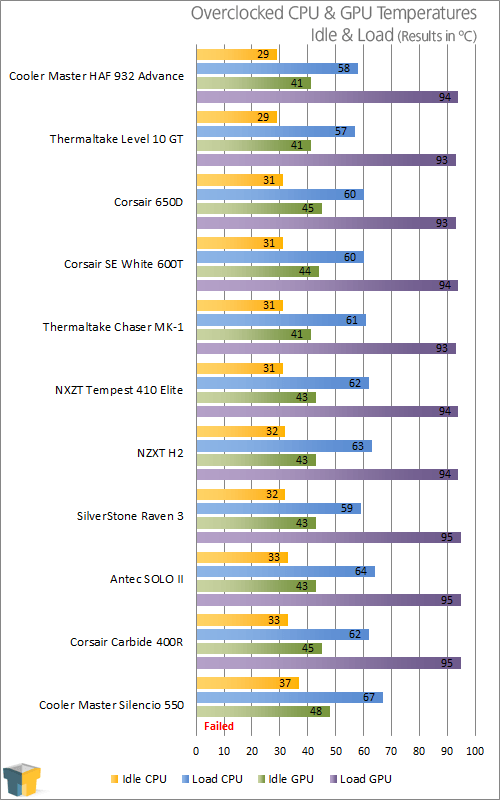
With only a single 120mm exhaust fan, or in our case the fan from a Corsair H60, it’s not surprising that the temperatures recorded with the SOLO II are higher than most other cases in our database. When compared to the competition in the quiet computing market however, the picture is quite rosy.
It beat out the Cooler Master Silencio 550 in all regards by at least 2 degrees and also kept our GTX 470 from crashing during overclocked load testing. The NZXT H2 wasn’t much further ahead with the SOLO II only trailing by 2 degrees during overclocked load testing of the CPU and a single degree between the GPU under the same test. This may not seem like much, but remember that the H2 comes with two 120mm intake fans on the front whereas the SOLO II doesn’t.
How could a case with less intake come so close to one that clearly has a more robust stock cooling setup? The sound dampening material. Antec has chosen to go with a plastic layer instead of the typical foam that many manufacturers use when building a silent case. This allows more heat to be transferred to the metal of the case and radiated outside instead of creating pockets of heated air.
Foam holds in more heat but also more sound. Even though the SOLO II was not noisy by any stretch of the imagination and allowed for overall system noise to be kept quite low, it did not much the sound dampening abilities of the Silencio or H2.
From build quality to installation to the test results, the SOLO II performed very well when compared to other cases in its intended market, but there are a few things to take into consideration before opening your wallet.
Support our efforts! With ad revenue at an all-time low for written websites, we're relying more than ever on reader support to help us continue putting so much effort into this type of content. You can support us by becoming a Patron, or by using our Amazon shopping affiliate links listed through our articles. Thanks for your support!




